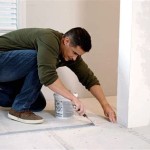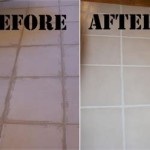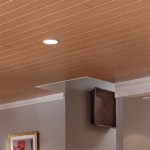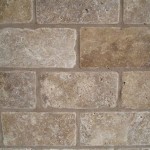Can You Put Vinyl Plank Over Ceramic Tile? A Comprehensive Guide
The question of installing vinyl plank flooring over existing ceramic tile is a common one for homeowners looking to renovate without undertaking a full demolition. While it’s a viable option under certain conditions, the success of this approach hinges on careful preparation and adherence to best practices. This article provides a detailed examination of the factors involved, the necessary steps, and potential challenges associated with laying vinyl plank over ceramic tile.
Vinyl plank flooring is often preferred for its durability, water resistance, and ease of installation. It's also a relatively cost-effective flooring solution. These features make it attractive to those seeking to update their floors without significant disruption or expense. Instead of removing the existing ceramic tile, which can be labor-intensive and generate considerable dust and debris, homeowners often explore the possibility of installing vinyl plank directly on top.
The decision to proceed with this method should not be taken lightly. A thorough assessment of the existing tile is crucial to ensure a smooth and long-lasting installation. Ignoring underlying issues with the ceramic tile can lead to problems with the vinyl plank flooring down the line, potentially negating any initial cost savings.
Assessing the Condition of the Existing Ceramic Tile
The condition of the ceramic tile is paramount to the success of installing vinyl plank flooring over it. Several factors need to be carefully considered. First, inspect the tile for any loose, cracked, or uneven sections. Any instability in the underlying tile will translate to the vinyl plank flooring above, creating an uneven surface and potential points of failure.
Loose tiles need to be re-adhered securely. This involves removing the loose tile, cleaning the underlying surface to remove any residual adhesive, and re-setting the tile with fresh mortar. It’s important to use a mortar that is compatible with the existing tile and substrate. Allow the mortar to fully cure according to the manufacturer's instructions before proceeding.
Cracked tiles should ideally be replaced. While it may be tempting to simply cover them over, the cracks can propagate through the vinyl plank flooring over time, especially under heavy foot traffic or furniture. Replacing cracked tiles is the best way to ensure a stable and even surface. If replacing the tile isn't feasible, consider filling the cracks with a suitable patching compound designed for ceramic tile. Ensure the patching compound is level with the surrounding tile surface.
Uneven tiles, whether due to improper installation or settling over time, present another challenge. Significant variations in height can create an uneven surface that is noticeable and uncomfortable underfoot. Leveling the tile surface may be necessary, using self-leveling compound designed for this purpose.
Finally, check for any moisture issues. Ceramic tile is generally water-resistant, but the grout lines are not entirely waterproof. Prolonged exposure to moisture can lead to mold and mildew growth underneath the tile, which can compromise the integrity of the installation. Address any moisture problems before installing the vinyl plank flooring.
Preparing the Ceramic Tile Surface
Once the condition of the existing ceramic tile has been thoroughly assessed and any necessary repairs have been made, the next step is to prepare the surface for the vinyl plank flooring. This involves cleaning, leveling (if needed), and potentially applying an underlayment.
Thorough cleaning is essential to remove any dirt, debris, grease, or wax that could interfere with the adhesion of the vinyl plank flooring. Use a heavy-duty cleaner specifically designed for ceramic tile. Rinse the surface thoroughly with clean water and allow it to dry completely before proceeding.
As mentioned earlier, leveling the surface is crucial if there are significant height variations between the tiles. Self-leveling compound can be used to create a smooth and even substrate. Follow the manufacturer's instructions carefully when applying self-leveling compound. This often involves preparing the surface with a primer to ensure proper adhesion.
The use of an underlayment is often recommended when installing vinyl plank flooring over ceramic tile. An underlayment provides a cushioning layer that can help to reduce noise transmission, improve comfort underfoot, and further even out any minor imperfections in the tile surface. Look for underlayments specifically designed for use with vinyl plank flooring, as they often have features that enhance their performance in this application. Some vinyl plank flooring products already come with an attached underlayment, which can simplify the installation process.
Consider the overall thickness of the vinyl plank flooring and any underlayment. You need to ensure that the finished height of the floor will not interfere with doors, appliances, or transitions to other flooring types. If necessary, trim doors or adjust appliances to accommodate the new floor height.
Installation Considerations for Vinyl Plank Flooring
With the ceramic tile surface properly prepared, the final step is the installation of the vinyl plank flooring. Careful attention to detail during this stage is essential to ensure a professional-looking and long-lasting result.
Acclimate the vinyl plank flooring to the room temperature for at least 48 hours before installation. This allows the planks to expand or contract, which helps to prevent gaps or buckling after installation. Store the planks in the room where they will be installed, away from direct sunlight or heat sources.
Follow the manufacturer's instructions for the specific type of vinyl plank flooring being installed. Most vinyl plank flooring products are either glued down or feature a click-lock system. Glue-down installations require the application of adhesive to the subfloor, while click-lock systems simply snap together.
When installing glue-down vinyl plank flooring, use the recommended adhesive and apply it evenly to the prepared surface. Apply the planks carefully, ensuring that they are properly aligned and firmly pressed into the adhesive. Roll the floor with a heavy roller to ensure good adhesion and remove any air pockets.
For click-lock vinyl plank flooring, start at one corner of the room and work your way across. Align the planks carefully and gently tap them together to engage the locking mechanism. Use a tapping block to avoid damaging the edges of the planks.
Leave an expansion gap around the perimeter of the room to allow for expansion and contraction of the flooring. This gap is typically covered by baseboards or quarter-round molding. Cut the vinyl plank flooring to fit around any obstacles, such as pipes or door frames. Use a utility knife or jigsaw to make clean and accurate cuts.
After the installation is complete, clean the floor thoroughly to remove any dirt or debris. Avoid using harsh chemicals or abrasive cleaners, as these can damage the surface of the vinyl plank flooring. Follow the manufacturer's recommendations for cleaning and maintaining the flooring.
While installing vinyl plank flooring over ceramic tile can be a cost-effective and convenient option, it’s crucial to weigh the pros and cons carefully. Consider the condition of the existing tile, the required preparation work, and the potential challenges involved. If you are unsure about any aspect of the installation process, consult with a professional flooring installer.

New Vinyl Plank Flooring Over Tile Table And Hearth

New Vinyl Plank Flooring Over Tile Table And Hearth

New Vinyl Plank Flooring Over Tile Table And Hearth

Can You Put Vinyl Plank Flooring Over Ceramic Tile Floors Blvd

New Vinyl Plank Flooring Over Tile Table And Hearth

Can You Install Vinyl Plank Over Tile Flooring America

Should You Install Vinyl Floor Over Tile

Lvt Flooring Over Existing Tile The Easy Way Vinyl Floor Installation Diy

New Vinyl Plank Flooring Over Tile Table And Hearth

Transform Your Home Installing Vinyl Flooring Over Ceramic Tiles City Wall And Floor
Related Posts








